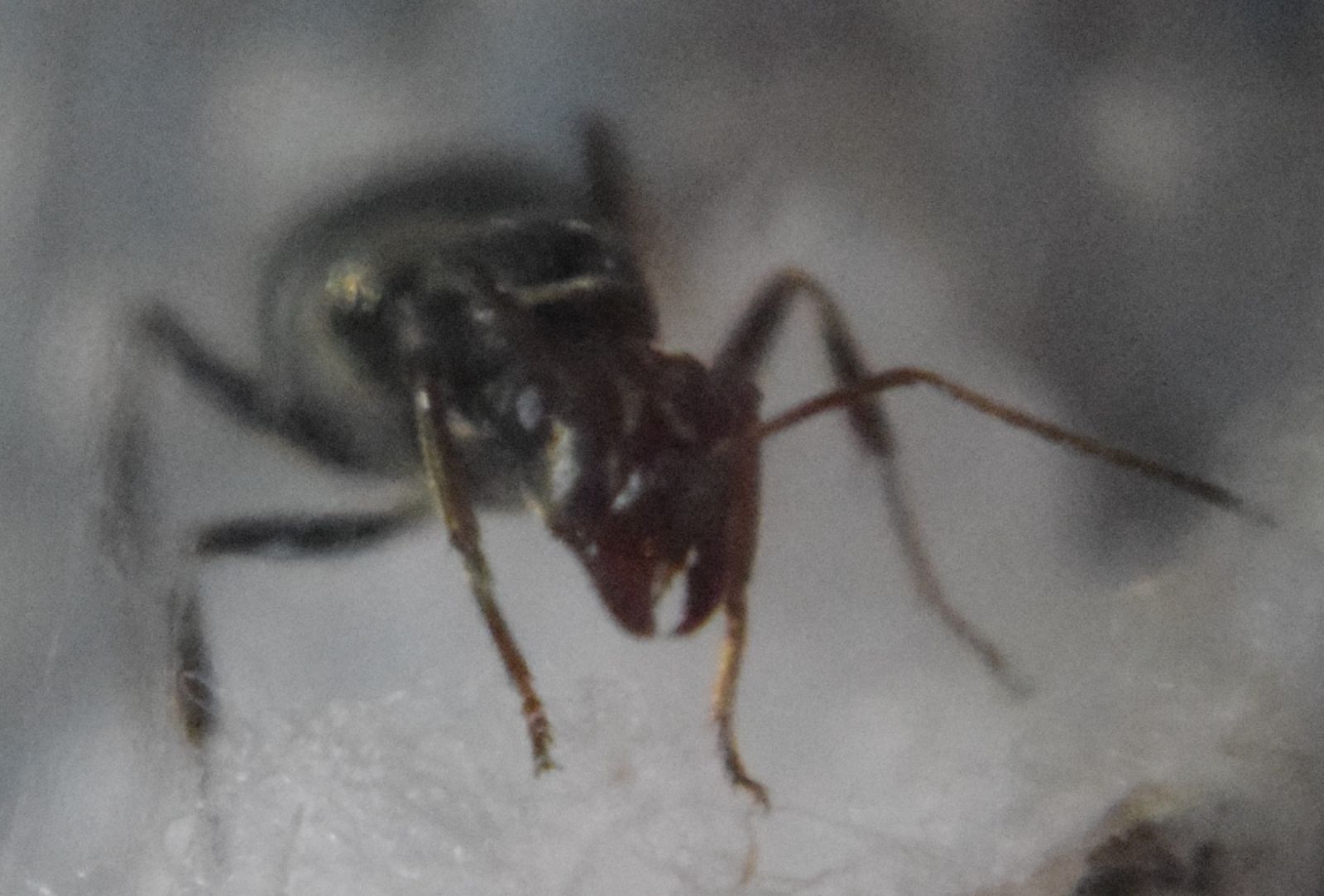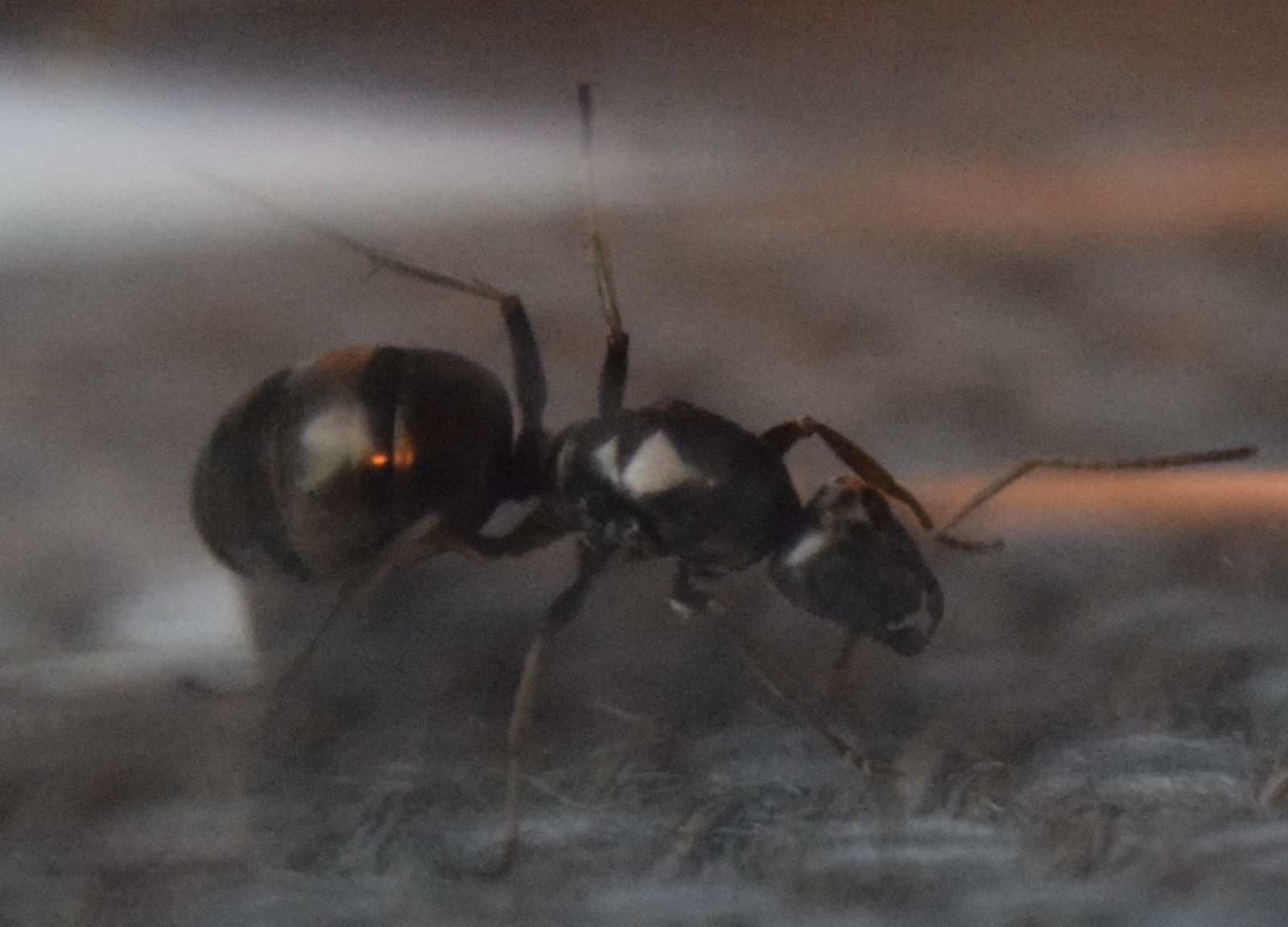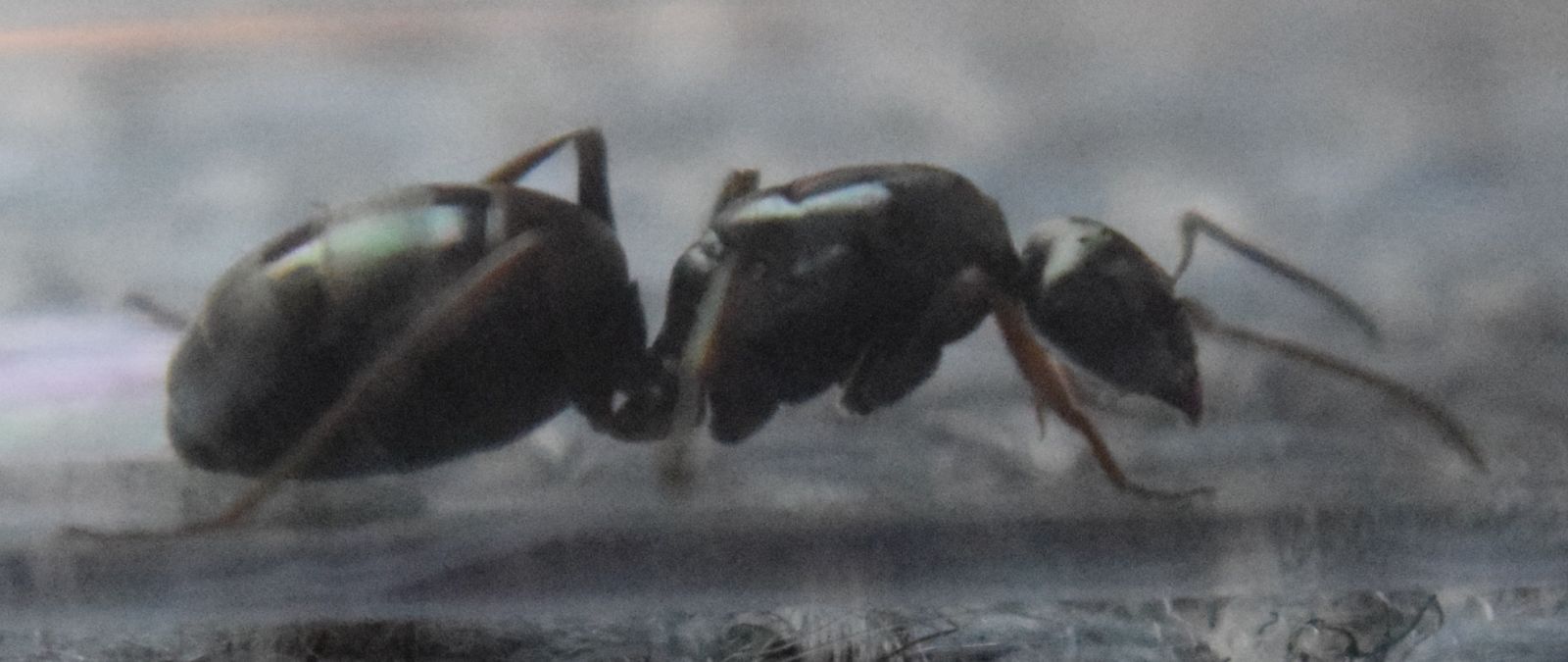1. Location of collection: Renton, Washington. I'm my side yard. It's not really a yard, it's small hill with some plants on it, 2 small trees. Messy.
2. Date of collection: This was my first queen, sadly I don't know the exact date. It was about a month ago. I think the 27th of July but not sure.
3. Habitat of collection: Suburb, I live near a lot of trees.
4. Length: 10 mm
5. Coloration, hue, pattern and texture: Bald, shiny, no hair at all. Gaster has some bands that are translucent/milky/white.
6. Distinguishing characteristics: One big, spiky petiole that I could only see when she was in a slightly curled position drinking water.



If she's gone about a month without eating should i give her a drop of honey in a tiny cotton ball?
I'm pretty sure she's either Camponotus or Formica but I can't tell the difference. What's a good way to tell with Camponotus or Formica queens?
She hasn't laid any eggs yet because this was my first queen and I didn't really know what I was doing so I checked up on her a lot.
Edited by YawningGull, August 24 2016 - 8:20 PM.















